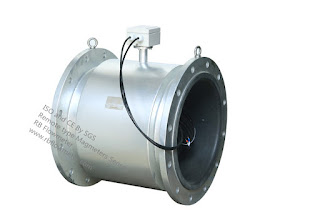Measuring Flow in Partially Filled Pipes: Magnetic vs. Ultrasonic Flow Meters
Measuring Flow in Partially Filled Pipes: Magnetic vs. Ultrasonic Flow Meters
When it comes to measuring flow in partially filled pipes, both magnetic (electromagnetic) and ultrasonic flow meters offer unique advantages and challenges. Understanding their operation principles and benefits can help in selecting the most suitable meter for specific applications.
- Principle: They operate on Faraday's law of electromagnetic induction, where a magnetic field is applied across a pipe, and the voltage induced in the fluid is proportional to the flow rate .
- Advantages:
- Provide highly accurate volumetric flow measurements.
- Have no moving parts, resulting in low maintenance and long-term stability.
- Can handle slurries and liquids with suspended solids.
- Ideal for applications requiring bidirectional flow measurement.
- Challenges in Partially Filled Pipes:
- May not be as accurate due to the non-uniform velocity profile near the pipe walls.
- Require full pipe flow for optimal performance.
- Principle: They use the transit-time or Doppler effect of ultrasonic waves to measure flow rate. The time difference of the wave traveling upstream and downstream is proportional to the flow velocity .
- Advantages:
- Can measure both conductive and non-conductive fluids.
- Non-invasive and easy to install without process interruption.
- Accurate and reliable in harsh environments.
- Some models offer anti-bubble technology for better accuracy.
- Challenges in Partially Filled Pipes:
- Susceptible to errors due to air bubbles or solid particles in the fluid.
- Less accurate in partially filled pipes compared to magnetic flow meters.
Accuracy:
- Magnetic: High accuracy with minimal effect from fluid properties.
- Ultrasonic: Slightly less accurate but offers reliable measurements in harsh environments.
Installation:
- Magnetic: Requires full pipe installation and may need regular maintenance.
- Ultrasonic: Easy to install on existing pipes with clamp-on models.
Suitability for Non-Conductive Liquids:
- Magnetic: Limited to conductive liquids.
- Ultrasonic: Effective for both conductive and non-conductive liquids.
Maintenance:
- Magnetic: Low maintenance due to no moving parts.
- Ultrasonic: Even lower maintenance, especially with clamp-on types.
Cost:
- Magnetic: Higher initial cost but potentially lower lifecycle costs.
- Ultrasonic: Medium initial cost with potentially lower maintenance costs.
- Magnetic Flow Meter: Ideal for wastewater treatment, food and beverage processing, mining industry, and paper industry.
- Ultrasonic Flow Meter: Suitable for clean water supply, oil and gas, HVAC systems, and chemical industry.




评论
发表评论